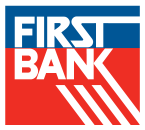Is home ownership one of your goals? Maybe you’re hoping to buy a house soon so you can get out of your rental arrangement, or maybe you’re still living with your parents or with a friend? No matter what your living situation is, owning a home is a goal for many young adults. Purchasing a home is more than likely going to be one of your most expensive investments, so it’s important to take a look at your financial situation and start saving early.
Here are a few ideas to help you start saving more:
1. Build a Budget. We get it. It’s hard to cut things out that you enjoy. Take a look at your bank accounts to see what expenses are coming out. Take note of your monthly expenses, like your cell phone bill, groceries, your car payment and insurance, or your rent and utilities. Are there any subscriptions you can cancel, such as video streaming or food delivery services? Decide how much you need in order to make your monthly payments and consider putting the remaining portion of the left over money into your savings account.
2. Open a Savings Account. As mentioned earlier, it’s a good idea to put some of your left over money in your savings account. This will help you save more as you won’t have as easy access to spending it like you would with money in your checking account. Additionally, consider automating your savings. This will help by automatically putting a portion of your paycheck directly into your savings account.
Do you need to open a savings account? Learn about First Bank’s Savings Account Options.
3. Track Your Spending. Often times, we are spending more than we realize. While a small purchase might not seem like much at the time, they can really add up over time. Keep a log of your extra expenses and review them at the end of the month to see where you can be saving additional cash.
4. Set a Savings Goal. Setting a goal will help you keep yourself accountable. Determine how much you’ll want or need to have saved by a certain time and work towards meeting that goal. Consider what your price range is for a new house. Aim to have 3% of the home's value for a down payment; however, if that isn't possible, speak to a First Bank Mortgage Home Loan Advisor about programs with little money down for first-time homebuyers. Keep in mind that credit values and the cost of the home will vary the amount you’ll need. Additionally, will you need to buy furniture to furnish the home, too? You’ll also want to make sure you factor in some additional cash for any home repairs that may be needed.


